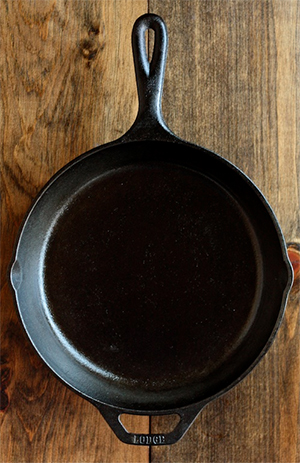So I found a pair of cast iron pans while cleaning up some junk at my dads place. These things had a thick layer of crud and grime burnt on the outside and inside along with plenty of rust. After tons of scrubbing they didn't look much batter. The burnt on grease and grime didn't really come off much. I remembered hearing you could put cast iron in the oven on the self clean setting and it woulf loosen the gunk. My oven doesn't have self clean. So I figured what the heck they're not really antique pans being newer Lodge products so I'm not out much if they get ruined. Last night I put the largest of the two into the wood stove on top of my overnight load of wood. This morning when I went to reload the stove there it sat on top of the ashes looking matte balck and dull red. Everything is either gone or turned to dust. It didn't warp or crack in the heat so it looks like after a good washing and re-season it will good to go!
Sent from my SM-G900P using Tapatalk
Sent from my SM-G900P using Tapatalk


